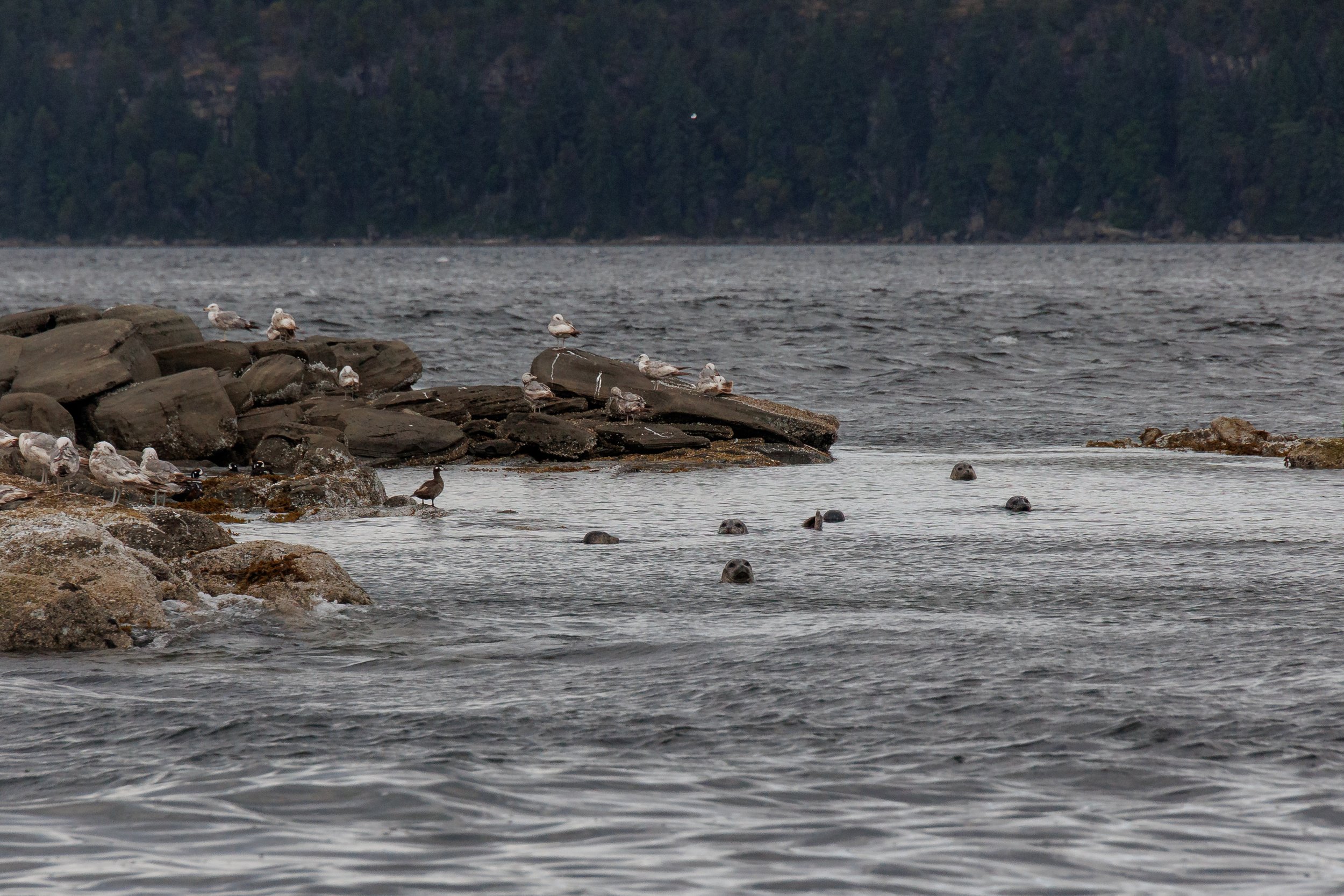June 13, 2023, 3:30 PM - T123s Off South Pender Island
After a successful morning, our crew decided to head south again to try to catch up to the groups we found off Saturna this morning. We came across one of our pods the T123s, this pod is special to us. Their story is one of resilience and survival.
The T123 Matriline:
T123 Sidney ♀ (~1985)
T123A Stanley ♂ (2000)
T123C Lucky ♀ (2012)
T123D Darcy ♀ (2018)
Orca are incredibly intelligent and the Matriarch will teach her offspring their culture, this includes their own specific dialect and hunting techniques. Sidney the matriarch of this pod is believed to have been teaching her son Stanley to hunt in the shallows when the pair became beached at low tide in July 2011. What was particularly worrisome was Sidney was pregnant at this time. When beached it is incredibly difficult for the Orca to breathe properly as the weight of their bodies without the buoyancy of the water is crushing. A male Transient Orca can weigh up to 12,000 pounds the females weigh between 8,000 and 11,000 pounds. As you can imagine this amount of weight on the organs is not only uncomfortable but also life-threatening for the Orca. It was a race against time as Sidney our Matriarch was also pregnant at this time. The two were tended to by passionate locals until the tide came up and they were able to swim away. Even with the immense pressure on Sidney’s internal organs, Lucky (her calf) survived!
Here is a video showing these two giants during that stranding encounter. We are very grateful that all 3 of them survived the ordeal!
You will see photos below of our boats passing under a bridge in the Pender Canal - a narrow waterway that connects the North and South Pender Islands. The Pender Canal is man-made, dug out in 1911 to allow boats passage at high tide! Prior to this, the islands were joined by an isthmus. An isthmus is a narrow strip of land that forms a link between two larger areas with the sea on either side. The isthmus was removed and replaced by a single-lane bridge, allowing car access to either island. This is close to the end of our range so we do not get to go there often, what a treat for our guests this afternoon!
The Pender Islands are home to Canada’s first olive tree grove. In most of the country, the weather is too harsh to cultivate olives. However, due to the Mediterranean-esque climate of the Southern Gulf Islands, farmers have now successfully cultivated olive groves on Pender Island, Saltspring Island, and Saturna Island.
Photos today were taken by our Marine Naturalists Chy Brewster and Des Poier.
T123A Stanley. Photo by Cheyenne Brewster.
T123A Stanley. Photo by Cheyenne Brewster.
T123A Stanley and his sister T123D Darcy. Photo by Cheyenne Brewster.
T123A Stanley, T123D Darcy, and their mother T123 Sidney. Photo by Cheyenne Brewster.
The Pacific Grace, an impressive 138’ schooner spotted during our tour. Photo by Cheyenne Brewster.
Our Open Zodiac Keta. Photo by Cheyenne Brewster.
Our Open Zodiac Keta approaching the Pender Canal. Photo by Cheyenne Brewster.
Entering the Pender Canal and crossing under the bridge. Photo by Des Poier.
A sleepy Harbour seal. Photo by Cheyenne Brewster.
Photo by Cheyenne Brewster.
A Great Blue Heron stalks the shores. Photo by Des Poier.
Great Blue Heron in flight. Photo by Des Poier.
Great Blue Heron in flight. Photo by Des Poier.
Look at this long neck! Photo by Des Poier.
Black Oyster Catchers. Photo by Des Poier.
A pile of Harbour Seals watching from the shallows. Photo by Des Poier.
Side-eyed by a California Sealion. Photo by Des Poier.

















